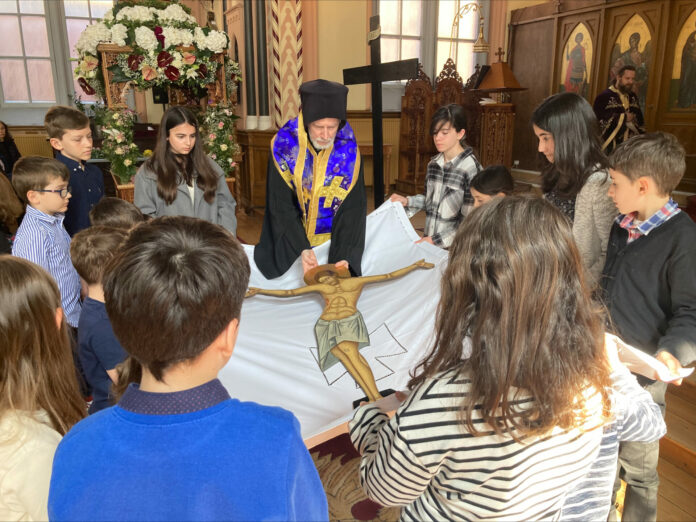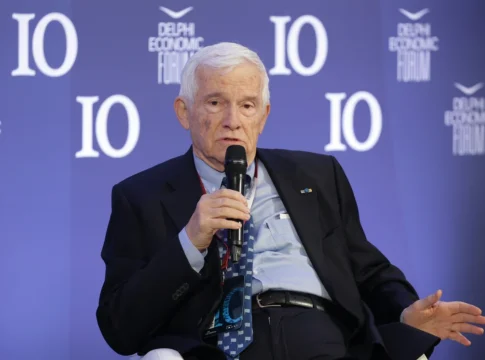The solemn and sacred evening of Holy Friday offers me the opportunity to reflect upon the book Night by the Nobel laureate Elie Wiesel — a painful autobiographical account of his survival as a teenager in the Nazi death camps.
In this harrowing work, Wiesel recounts: “One day the SS hanged three people — two men and a boy — in front of the entire camp. The child’s fate particularly shook the prisoners who had been forced to gather and watch the spectacle. ‘Where is our merciful God? Where is He?’, someone behind me asked. Not long after, it was time for us to march in front of the victims. The two men had died, but the child was still alive. He remained hanging, struggling between life and death, for more than half an hour. He was still alive when I passed by. Behind me, I heard the same man asking, ‘For God’s sake, where is God?’ And I heard a voice within me answering, ‘Where is He? He is there — hanging on those gallows.’”
Here we encounter the troubling question of theodicy: Why are the righteous tested while the unjust prosper? How can the existence of evil be reconciled with a just and merciful God?
The historic person of Job stands as the most emblematic example of theodicy. God allows his faith to be tested; however, he endures his trials with patience, and his prayer remains steadfast: “Blessed be the name of the Lord!” Thus, the words of the Prophet Habakkuk: “The just shall live by faith” and the words of St. Paul the Apostle: “I delight in weaknesses, in insults, in hardships, in persecutions, in difficulties, for Christ’s sake. For when I am weak, then I am strong” are both fulfilled.
In an interview with Ferdinando Camon, the writer Primo Levi (Ferdinando Camon, Conversations with Primo Levi) — a Holocaust survivor — stated: “If Auschwitz exists, then God cannot exist.”
And Aaron Zeitlin (Aaron Zeitlin, Poems of the Holocaust and Poems of Faith) pondered: “All day I sought an answer in the scabbed earth and the ashes of the sky. I tried to understand what connects the gas chambers to God.”
It is the writers and poets who dare to ask whether, in events like Auschwitz, God remains indifferent and aloof — a deus absconditus, a hidden God — or even, perhaps, whether He has already died.
God did die — but how? Christ, the quintessential Righteous One, was put to death. His cry from the Cross is the fulfillment of the 21st Messianic Psalm: “My God, my God, why have You forsaken me?”
This pinnacle of Divine Kenosis — the Sacrifice on the Cross — is also referred to as the Extreme Humility, the Divine Passion, the Paradox of the Cross, and the moment of complete abandonment.
St. Justin Popović writes in a homily on Good and Holy Friday: “Today, the devil has ‘taken on flesh’ in man, in order to destroy the God-Man. Today, God is judged by man.
Today, man decides that God is worth thirty pieces of silver. Was Judas the last among us who appraised Christ at thirty pieces of silver?
Never was there a more innocent convict. Never has the world seen a more absurd judge.
You drove nails through the hands of Christ — the hands that healed the sick, cleansed the lepers, raised the dead. Jairus, where are you? Lazarus, where are you? Widow of Nain, where are you to defend your Lord and mine?
You crucify the One who is the hope of the hopeless, the consolation of the comfortless, the eyes of the blind, the ears of the deaf, the resurrection of the dead!
And yet, what does the Lord think of the people below the Cross? What only the God of love and meekness could ever think: ‘Father, forgive them, for they know not what they do.’” (Mark, 23: 34)
Through His Divine Passion, Jesus the God-Man shares in the suffering and trials of humanity. The “burial of God incarnate” represents His participation in human suffering. Thus, as one
modern theologian affirms, “Christ’s continual agony is social misery, as he still suffers on behalf of His members.” (π. Γεώργιος Φλωρόφσκυ, «Το κοινωνικό πρόβλημα στην Ανατολική Ορθόδοξη Εκκλησία», στου ίδιου, Χριστιανισμός και Πολιτισμός, σ. 169).
Christ “equalizes the value of those who suffer with His own. He shows that He Himself suffers with those who suffer.” (π. Δημήτριος Στανιλοάε, «Η χριστιανική αντίληψη για το αίσθημα ευθύνης», Σύναξη 118 (2011), σ. 8)
He suffers with the suffering and those who suffer hardships together with him. Now Risen — He walks alongside Luke and Cleopas on the road to Emmaus, affirming His promise to us: “Behold, I am with you always, till the end of the age.”
“When the sufferings of Christ become an honor for humanity, then they can become the foundation of human life. Through Christ’s sufferings — as well as through His Incarnation and Resurrection — we learn the overwhelming measure of God’s love for us.” (Ευ. Αλ. Δάκας, Καταπάνω στον θάνατο)
This holy and solemn night of Good Friday is a unique opportunity to embrace the gift of eternity and immortality, thanks to the Resurrection!














